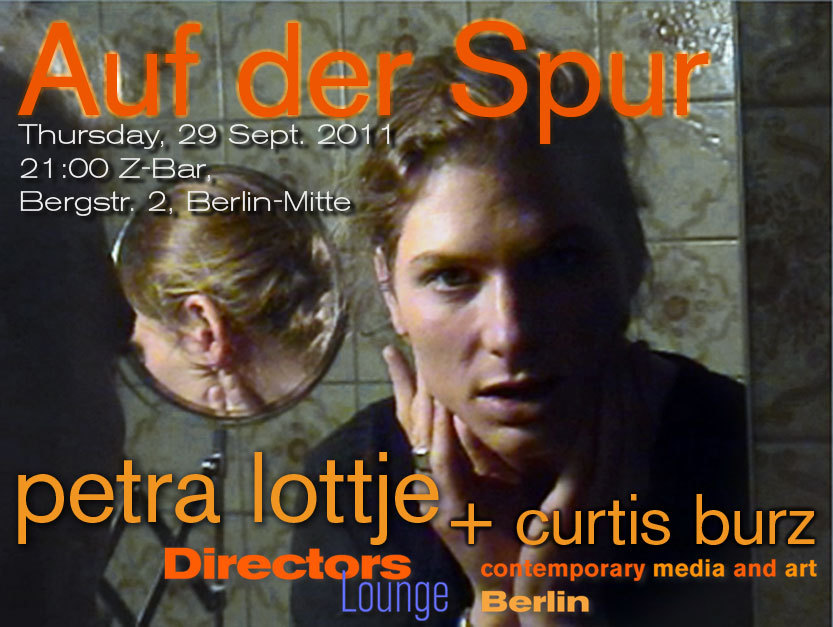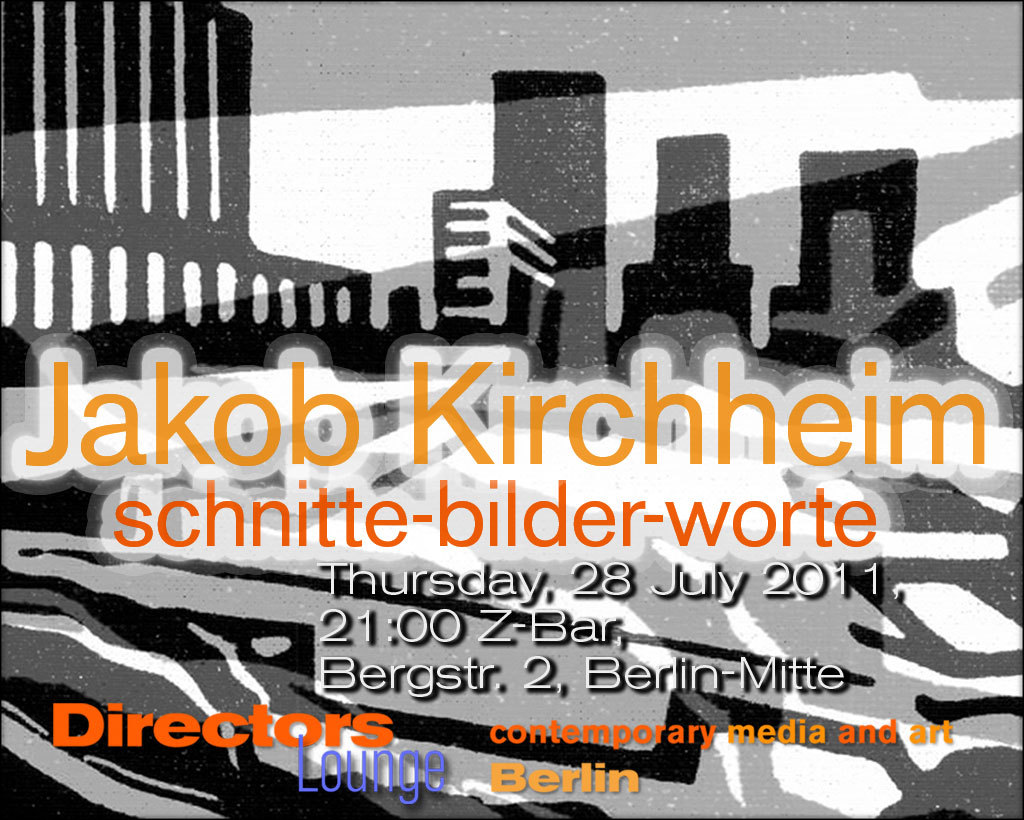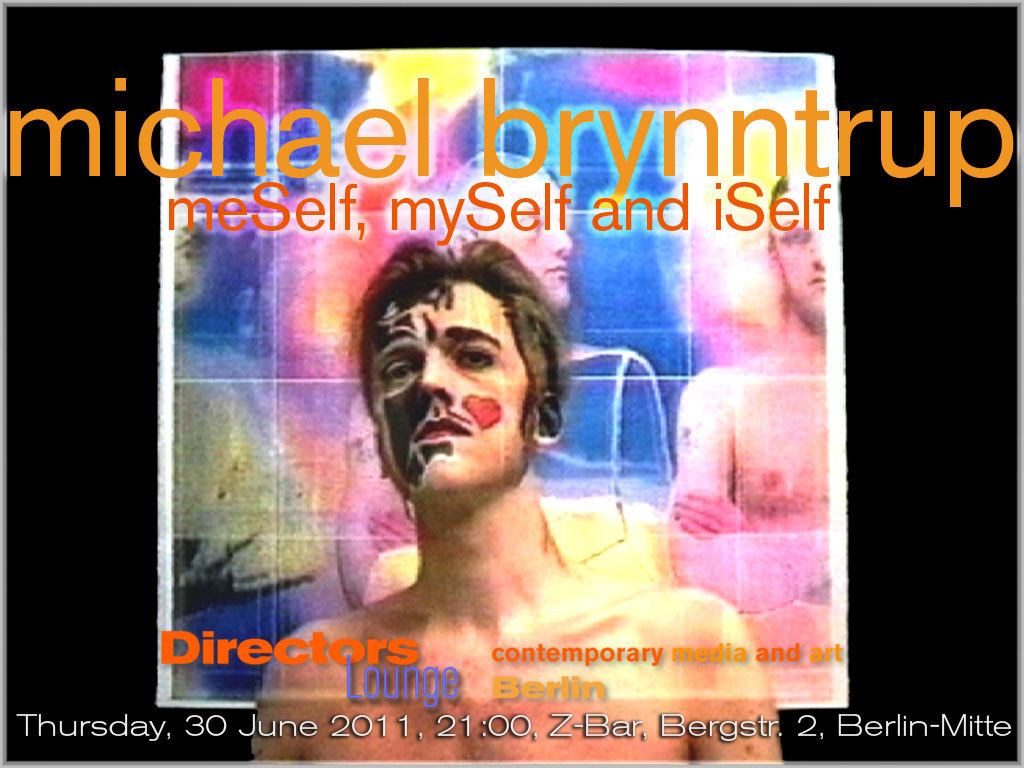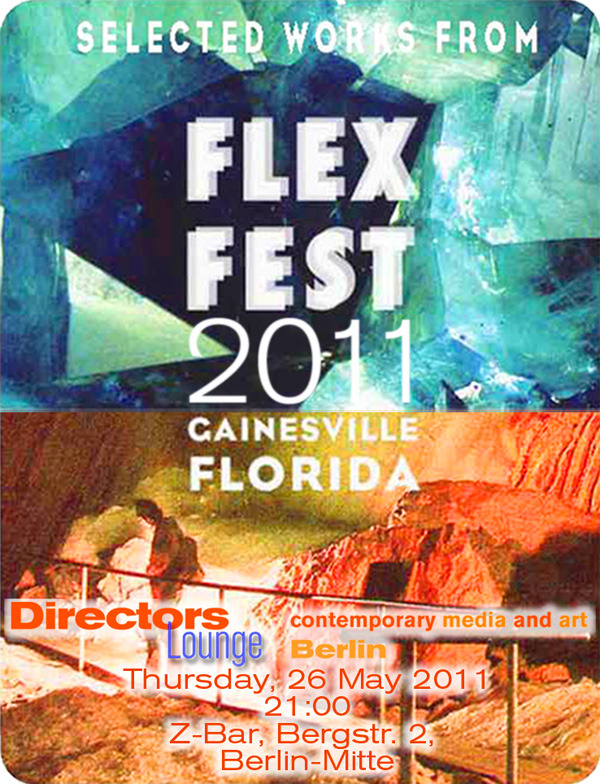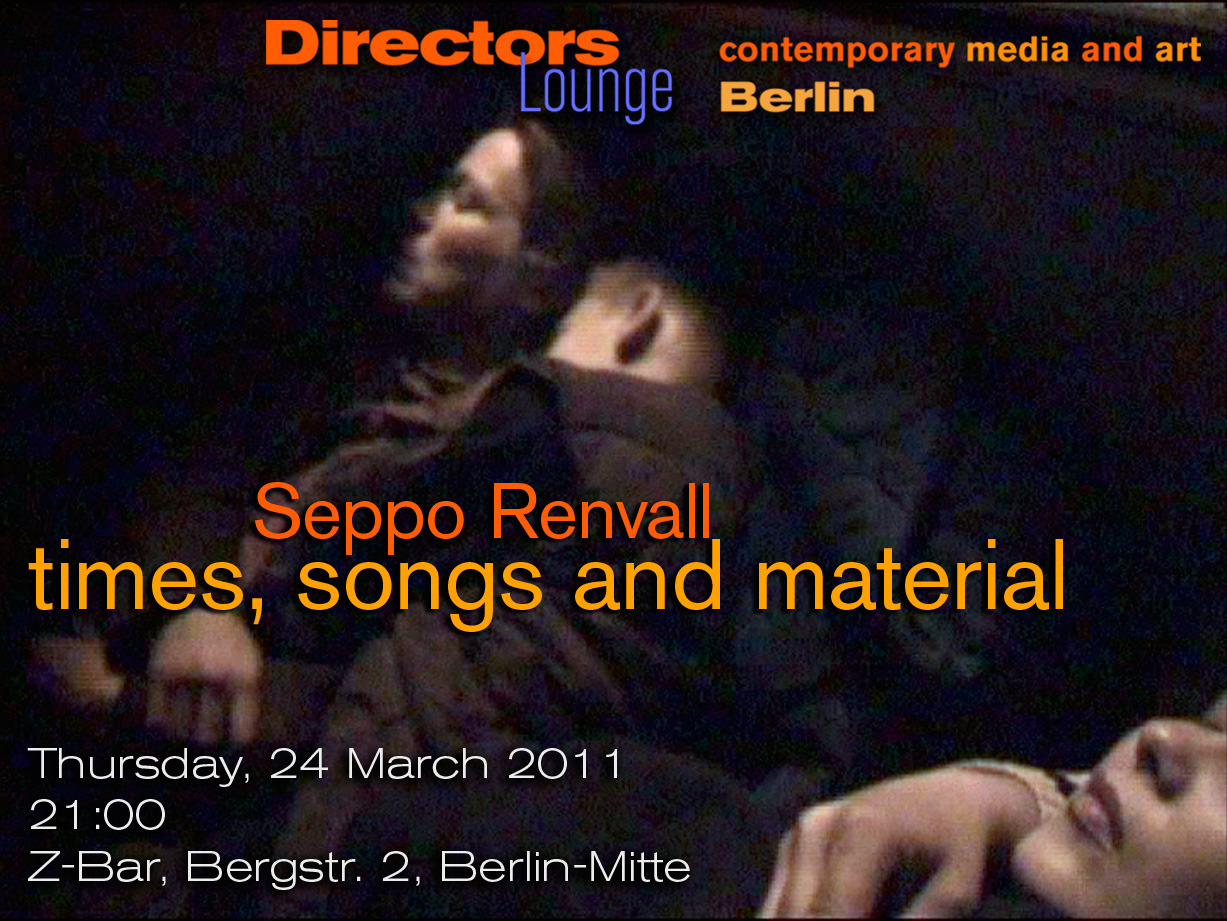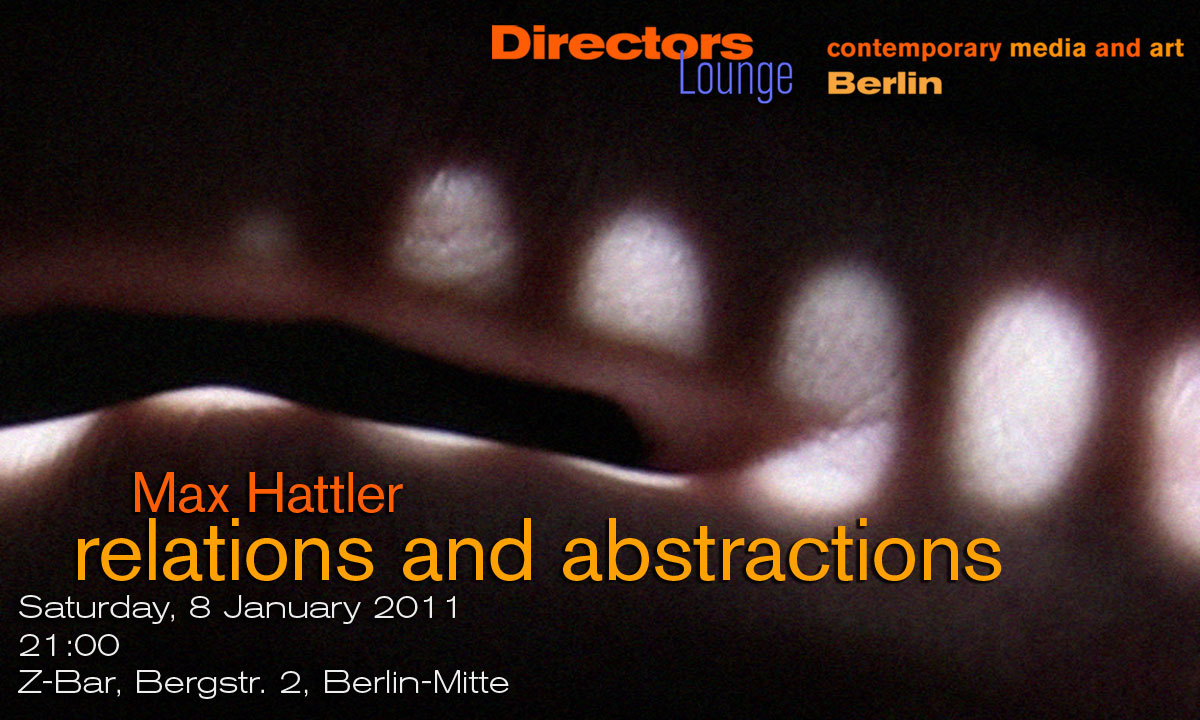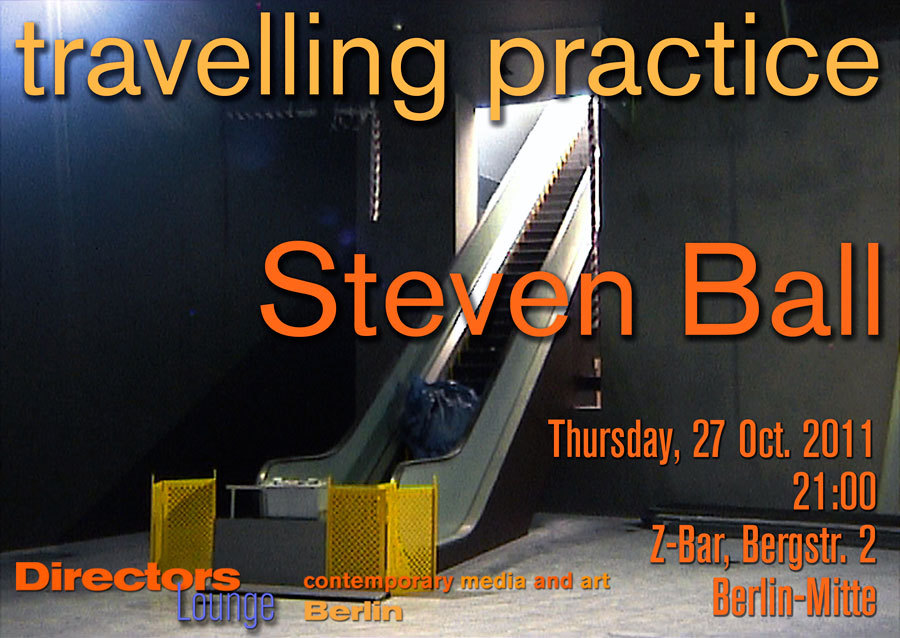
Directors Lounge Screening
Steven Ball
Travelling Practice
video works
Thursday, 27 Oct. 2011
21:00
Z-Bar
Bergstraße 2
10115 Berlin-Mitte
Travelling Practice
Digital video works by Steven Ball 2003 – 2010. These works travel near and far, across physical and virtual space using material collected en route. Travel determines form, subject and object are fluid entities, digital experimentation becomes landscape study, hyperlocal excursion, and experimental documentary, as they explore and exhaust species of spaces and media.
Steven Ball has worked in film, video, sound and installation since the early 1980s. In the late 1980s he accidentally migrated to Melbourne, Australia. There he continued his practice making a number of film, video and sound and installation works, as well as being engaged in various curatorial, administrative, teaching and writing activities. Since returning to the UK he has worked predominantly with digital video, producing a series of works, which among other things, are particularly concerned with digital material processes and spatial representation.
Curated by Klaus W. Eisenlohr
Artist Links:
home: http://www.steven-ball.net
blog: http://directobjective.blogspot.com
videoblog: http://directlanguage2010.blogspot.com
Public Water: http://www.publicwater.net
More infos:
http://www.directorslounge.net

